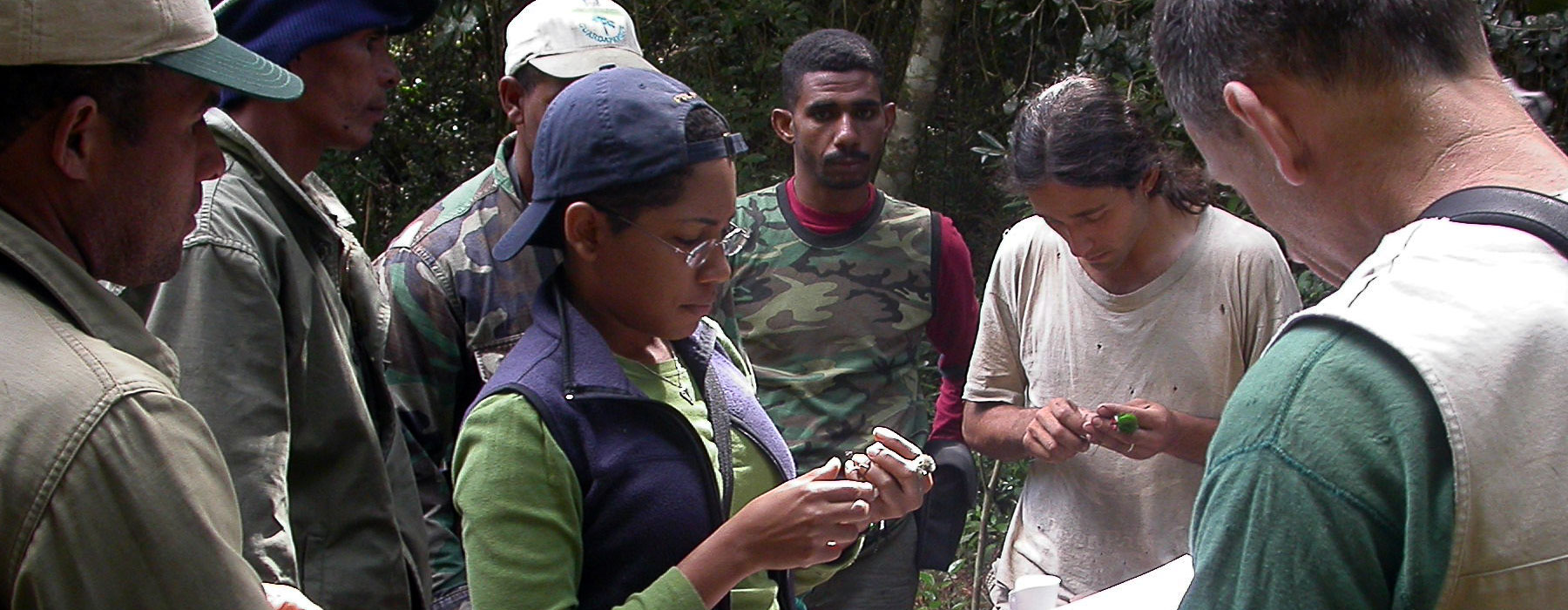We monitored bird populations in the cloud forest of Bahoruco National Park, southwest Dominican Republic for nearly two decades.
This forest is home to several critically endangered, endemic birds that have been rarely studied as well as migrants such as Bicknell's Thrush and Ovenbird.
Since our first field trip to the Sierra de Bahoruco in 1994, VCE has concentrated research and monitoring efforts in montane forests of both the Dominican Republic and Haiti. At our two long-term Bahoruco study sites, Pueblo Viejo and Palo de Agua, we have conducted standardized midwinter monitoring with mist nets since 1995. These two sites feature some of Hispaniola’s most spectacular tracts of montane rain forest.
Our banding data have yielded new insights into the site fidelity and longevity of Hispaniolan montane forest birds. Among migrant species, Bicknell’s Thrush shows an average annual return rate of 25%, and we have recaptured several birds up to 7 years old in Sierra de Bahoruco. Resident species show very high site fidelity–during the winter of 2008 we mist-netted an 11-year old Green-tailed Ground-Tanager, an 11-year old Western Chat-Tanager, and a 10-year old Greater Antillean Bullfinch.
The banding station has also been a teaching facility. Over the years, hundreds of students and biologists have received hands-on training about ecology and conservation here. Interns have always been a vital component of our work at the Bahoruco Bird Banding Station.

